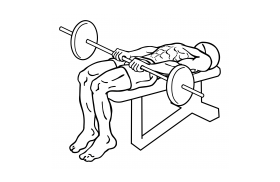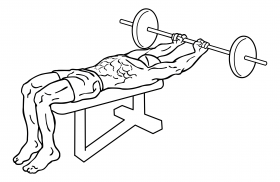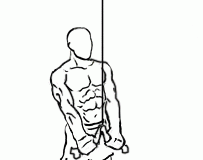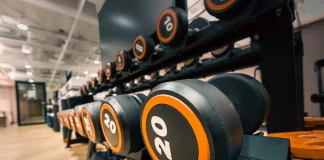Last Updated on September 30, 2022
The barbell front raise and pullover is a dynamic exercise that targets multiple upper body muscles, including the chest, triceps, and shoulders. This exercise not only enhances muscle strength but also promotes stability and flexibility in the upper body. Whether you are a seasoned lifter or a beginner looking to diversify your workout routine, incorporating this exercise can be highly beneficial. In this blog post, we will explore the benefits of the barbell front raise and pullover, provide a detailed step-by-step guide on how to perform it correctly, and offer tips to maximize your workout.
Understanding the Barbell Front Raise and Pullover
The barbell front raise and pullover is a compound exercise that combines elements of both the front raise and the pullover. It is designed to engage multiple muscle groups simultaneously, making it an efficient addition to any workout regimen. The exercise primarily targets:
- Chest Muscles: The pectoralis major is heavily engaged during the pullover phase of the exercise.
- Triceps: The triceps brachii are activated as you extend your arms during the movement.
- Shoulders: The deltoids play a crucial role in stabilizing and moving the barbell during both phases of the exercise.
Benefits of the Barbell Front Raise and Pullover
- Muscle Strengthening: By targeting key upper body muscles, this exercise helps increase muscle mass and strength.
- Improved Flexibility: The movement involved in this exercise enhances flexibility in the shoulder joints.
- Core Stability: Engaging your core during the exercise helps improve overall stability and balance.
- Efficient Workout: As a compound movement, it allows you to work multiple muscles at once, saving time while maximizing results.
How to Perform the Barbell Front Raise and Pullover
To ensure safety and effectiveness, it’s important to perform this exercise with proper form. Follow these steps:
- Setup: Begin by lying flat on a bench with your feet firmly planted on the ground for stability. Grasp a barbell with a medium grip, approximately 15 inches apart. This grip width allows for optimal control and engagement of the target muscles.
- Starting Position: Place the barbell on your upper thighs. Your arms should be straight but maintain a slight bend in your elbows to prevent joint strain.
- Engage Your Core: Draw in your abs by engaging your core muscles. This will help stabilize your body throughout the movement.
- Execution – Front Raise Phase:
- Keeping your back flat against the bench, raise your arms in an arc over your head.
- Ensure that your elbows remain slightly bent throughout this phase to protect your joints.
- Execution – Pullover Phase:
- Continue moving the barbell behind your head as if performing a reverse pullover.
- Focus on controlling the movement rather than using momentum.
- Return to Starting Position: Slowly bring the barbell back over your head and return it to its starting position on your thighs.
- Repetitions: Perform 8-12 repetitions per set for optimal muscle engagement, adjusting weight as necessary based on your fitness level.
Tips for Maximizing Your Workout
- Warm-Up: Always begin with a proper warm-up to prepare your muscles and joints for exercise.
- Controlled Movements: Avoid rushing through repetitions; focus on controlled movements to engage muscles effectively.
- Breathing Technique: Exhale as you lift the barbell over your head and inhale as you return it to your thighs.
- Progressive Overload: Gradually increase weight over time to continue challenging your muscles and promoting growth.
- Rest Periods: Allow adequate rest between sets to prevent fatigue and maintain proper form throughout your workout.
Common Mistakes to Avoid
- Using Excessive Weight: Lifting too heavy can compromise form and increase injury risk.
- Arching Your Back: Maintain contact between your back and the bench to prevent strain.
- Locking Elbows Completely: Keep a slight bend in your elbows to protect them from hyperextension.
- Neglecting Core Engagement: Failing to engage your core can lead to instability during the exercise.
The barbell front raise and pullover is an effective exercise for anyone looking to enhance their upper body strength and flexibility. By following proper technique and incorporating this movement into your routine, you can achieve significant gains in muscle mass and overall fitness. Remember to listen to your body, progress at a comfortable pace, and enjoy the journey towards achieving your fitness goals!








